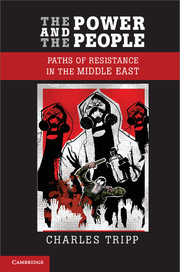Book contents
- Frontmatter
- Contents
- List of Illustrations and Credits
- Acknowledgements
- Glossary
- List of Abbreviations
- Introduction
- 1 State Capture and Violent Resistance
- 2 Contesting Public Space
- 3 Imposition and Resistance in Economic Life
- 4 Body Politics
- 5 History Wars
- 6 Symbolic Forms of Resistance
- Conclusion
- Notes
- Bibliography and Further Reading
- Index
1 - State Capture and Violent Resistance
Published online by Cambridge University Press: 05 January 2013
- Frontmatter
- Contents
- List of Illustrations and Credits
- Acknowledgements
- Glossary
- List of Abbreviations
- Introduction
- 1 State Capture and Violent Resistance
- 2 Contesting Public Space
- 3 Imposition and Resistance in Economic Life
- 4 Body Politics
- 5 History Wars
- 6 Symbolic Forms of Resistance
- Conclusion
- Notes
- Bibliography and Further Reading
- Index
Summary
WHY ARMED RESISTANCE?
A boot repeatedly treading on a face is one of the more disturbing images of the violence at the heart of political power. Used by George Orwell in his novel 1984 to sum up the brutality of a totalitarian regime, it was linked in the story to an equally disturbing image of the violence and moral dilemmas involved in resistance to oppression. When asked about the lengths to which he would go to resist, Winston, the protagonist, admits that he would be willing to throw acid in the face of a child if it would help to break the power of the ruling party. In both cases, the force of the image is in part due to the fact that the victim has a face, is a recognizable person like us, but the perpetrators remain faceless. These are the common currency of governments and of resistance organizations in their portrayals of each other, made all the more plausible by the ferocious violence of which both have been capable.
In the case of the state, the organization of violence has been associated with a physical presence, concentrated in a particular site, the administrative centre, the location of supreme authority and the source of command to the armed forces. It is this aspect of state power and the resistance it provokes that I shall be discussing in this chapter. In the Middle East, as in other parts of the world, these sites are recognizable as magnificent historical relics, such as the Cairo citadel looming over the old city, the all-seeing but unseen spaces of the Topkapi Palace with their views across and around Istanbul, or the towering citadel of Aleppo that dominates the landscape from the summit of its man-made hill at the city’s centre.
- Type
- Chapter
- Information
- The Power and the PeoplePaths of Resistance in the Middle East, pp. 19 - 70Publisher: Cambridge University PressPrint publication year: 2013



